Related Research Articles
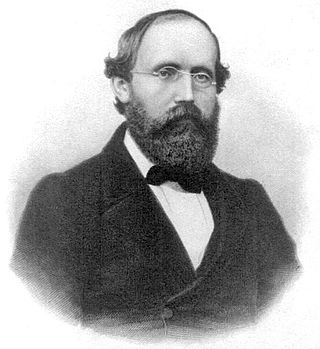
Georg Friedrich Bernhard Riemann was a German mathematician who made profound contributions to analysis, number theory, and differential geometry. In the field of real analysis, he is mostly known for the first rigorous formulation of the integral, the Riemann integral, and his work on Fourier series. His contributions to complex analysis include most notably the introduction of Riemann surfaces, breaking new ground in a natural, geometric treatment of complex analysis. His 1859 paper on the prime-counting function, containing the original statement of the Riemann hypothesis, is regarded as a foundational paper of analytic number theory. Through his pioneering contributions to differential geometry, Riemann laid the foundations of the mathematics of general relativity. He is considered by many to be one of the greatest mathematicians of all time.
A Heronian tetrahedron is a tetrahedron whose edge lengths, face areas and volume are all integers. The faces must therefore all be Heronian triangles . Every Heronian tetrahedron can be arranged in Euclidean space so that its vertex coordinates are also integers.
Elwin Bruno Christoffel was a German mathematician and physicist. He introduced fundamental concepts of differential geometry, opening the way for the development of tensor calculus, which would later provide the mathematical basis for general relativity.
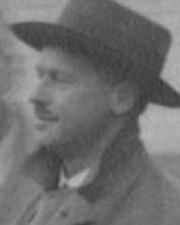
Ludwig Georg Elias Moses Bieberbach was a German mathematician and Nazi.

Richard Edler von Mises was an Austrian scientist and mathematician who worked on solid mechanics, fluid mechanics, aerodynamics, aeronautics, statistics and probability theory. He held the position of Gordon McKay Professor of Aerodynamics and Applied Mathematics at Harvard University. He described his work in his own words shortly before his death as:
practical analysis, integral and differential equations, mechanics, hydrodynamics and aerodynamics, constructive geometry, probability calculus, statistics and philosophy.
Hugo Albert Emil Hermann Dingler was a German scientist and philosopher.
Daniel Christian Ludolph Lehmus was a German mathematician, who today is best remembered for the Steiner–Lehmus theorem, that was named after him.
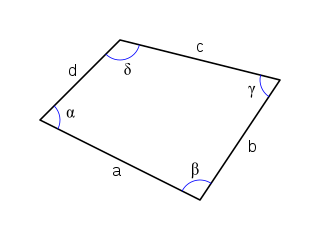
Carl Anton Bretschneider was a mathematician from Gotha, Germany. Bretschneider worked in geometry, number theory, and history of geometry. He also worked on logarithmic integrals and mathematical tables. He was one of the first mathematicians to use the symbol for Euler's constant when he published his 1837 paper. He is best known for his discovery of Bretschneider's formula for the area of a general quadrilateral on a plane,

Victor Schlegel was a German mathematician. He is remembered for promoting the geometric algebra of Hermann Grassmann and for a method of visualizing polytopes called Schlegel diagrams.
Heinrich August Rothe (1773–1842) was a German mathematician, a professor of mathematics at Erlangen. He was a student of Carl Hindenburg and a member of Hindenburg's school of combinatorics.
Karl August Reinhardt was a German mathematician whose research concerned geometry, including polygons and tessellations. He solved one of the parts of Hilbert's eighteenth problem, and is the namesake of the Reinhardt polygons.

Hermann Kinkelin was a Swiss mathematician and politician.
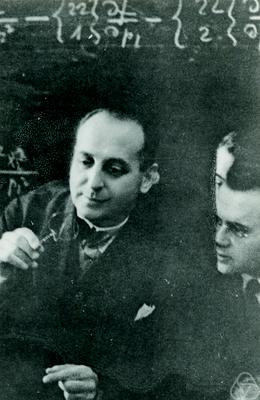
Georg Feigl was a German mathematician.
Hans Robert Müller was an Austrian mathematician, professor and director of mathematical institutes at two universities.
David Rytz von Brugg was a Swiss mathematician and teacher.

Karl Otto Heinrich Liebmann was a German mathematician and geometer.
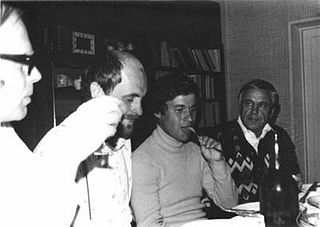
Helmut V. Koch is a German mathematician specializing in number theory.

Carl Friedrich Geiser was a Swiss mathematician, specializing in algebraic geometry. He is known for the Geiser involution and Geiser's minimal surface.
Gerhard Karl Theodor Haenzel was a German mathematician.

Eberhard Hermann Erich Zeidler was a German mathematician, who worked primarily in the field of non-linear functional analysis.
References
- 1 2 Kieser, Dietrich Georg; Carus, Carl Gustav; Behn, Wilhelm Friedrich Georg; Knoblauch, Carl Hermann; Wangerin, Albert (1900), Leopoldina (in German), vol. 36, Halle, p. 132
{{citation}}: CS1 maint: location missing publisher (link). - 1 2 3 Biermann, Kurt R. (1972), "Reinhold Hoppe", Neue Deutsche Biographie (in German), vol. 9, Berlin: Duncker & Humblot, pp. 614–615; ( full text online )
- 1 2 Schreiber, Peter (1996), "Johann August Grunert and his Archiv der Mathematik und Physik as an integrative factor of everyone's mathematics in the middle of the nineteenth century", in Goldstein, Catherine; Gray, Jeremy; Ritter, Jim (eds.), Mathematical Europe: History, myth, identity, Paris: Ed. Maison des Sci. de l'Homme, pp. 431–444, MR 1770139 . See in particular pp. 435–437.
- ↑ Zielsetzung, German Mathematical Society, retrieved 2015-08-19.
- ↑ Kolmogorov, Andrei N.; Yushkevich, Adolf-Andrei P. (2012), Mathematics of the 19th Century: Geometry, Analytic Function Theory, Birkhäuser, p. 81, ISBN 9783034891738 .
- ↑ Coxeter, H. S. M. (1973), Regular Polytopes , Dover, p. vi, ISBN 0-486-61480-8 .
- ↑ Gould, H. W. (February 1973), "A triangle with integral sides and area" (PDF), Fibonacci Quarterly , 11 (1): 27–39.
- ↑ Zong, Chuanming (2008), "The kissing number, blocking number and covering number of a convex body", in Goodman, Jacob E.; Pach, János; Pollack, Richard (eds.), Surveys on Discrete and Computational Geometry: Twenty Years Later (AMS-IMS-SIAM Joint Summer Research Conference, June 18–22, 2006, Snowbird, Utah), Contemporary Mathematics, vol. 453, Providence, RI: American Mathematical Society, pp. 529–548, doi:10.1090/conm/453/08812, MR 2405694 .
- ↑ Johnson, Warren P. (2002), "The curious history of Faà di Bruno's formula" (PDF), American Mathematical Monthly, 109 (3): 217–234, doi:10.2307/2695352, JSTOR 2695352, MR 1903577 .
- ↑ Ernst, Thomas (2012), A Comprehensive Treatment of q-Calculus, Springer, p. 52, ISBN 9783034804318 .
- ↑ Despeaux, Sloan Evans (2002), "International mathematical contributions to British scientific journals, 1800–1900", in Parshall, Karen Hunger; Rice, Adrian C. (eds.), Mathematics unbound: the evolution of an international mathematical research community, 1800–1945 (Charlottesville, VA, 1999), History of Mathematics, vol. 23, Providence, RI: American Mathematical Society, pp. 61–87, MR 1907170 . See in particular p. 71.